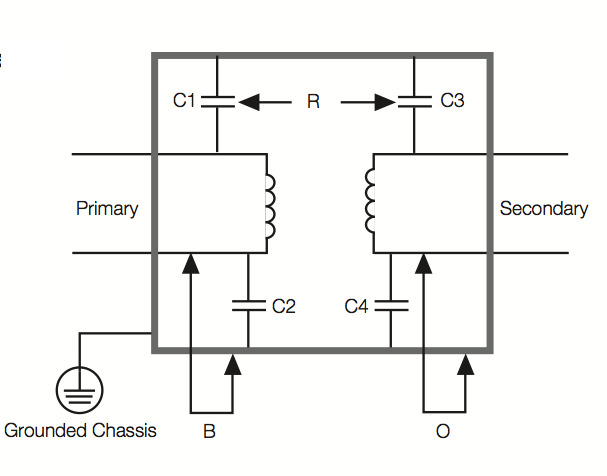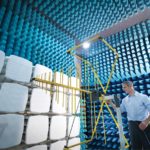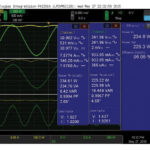Designers specifying ac/dc power supplies are concerned with maintaining performance over a range of input and load conditions and complying with demanding international regulations for efficiency, standby power, harmonics, power factor, safety, and electromagnetic compatibility. Identifying relevant standards and the associated testing requirements is a critical part of that process. This FAQ will review some of the common standards for ac/dc power supplies and the appropriate tests. The next FAQ will consider validating power distribution integrity in embedded power systems.
Efficiency and standby power
Power supply efficiency is the ratio of the output power to the input power, usually expressed as a percentage. Since ac/dc power supplies have nonlinear efficiency versus loading curves, efficiency tests are typically performed at several different load levels. When considering Energy Star requirements, the most-often used load levels are 100%, 75%, 50%, and 25%. The European CoC Ver 5 Tier 2 standard also requires testing at 10% of rated load. A typical test starts by running the power supply for 30 minutes under full load, followed by a 5-minute period of monitoring the ac input power to ensure that it has stabilized and has a drift of no more than 1%.
The efficiency test results include both the power supply’s efficiency at each load level (express as a percentage of the load to the active ac input power) and the difference between the active ac input power and the load power.
Power analyzers are most often used for power supply efficiency testing. IEC-62310 defines the requirements for power analyzers used for measuring efficiency. The standard also defines the requirements for using an active or passive load to set the output level of the power supply. Finally, active ac power sources are required to meet the regulatory requirements. Using a simple ac wall receptacle as the power source is insufficient since mains power can be subject to wide variations based on various external factors.

Several efficiency standards also require that no-load power consumption conforms to specific levels. Standby power can be measured with a wattmeter or power analyzer, but there are several measurement challenges that you must consider:
- The measuring device must have sufficient range to provide meaningful results for very low power and current measurements.
- Burst-mode operation causes power to be drawn irregularly with high crest factors and significant distortion. The measuring device must handle highly distorted waveforms that result from high crest factor load currents.
- Under no-load conditions, the power factor often drops to low levels and can cause distorted measurements.
PFC and harmonics
Harmonic currents and less-than-unity power factors result from the peak rectification techniques, and highly-capacitive front ends found in ac/dc power supplies. As discussed in the first FAQ in this series, “Basics of AC power measurements,” harmonic currents in the power grid and low power factors can cause power quality problems, resulting in increased heating in the conductors and other components in the grid. EN61000-3-2 has been introduced to control harmonic emissions for equipment with an input current ≤16 A per phase. EN61000-3-2 identifies four classes of equipment, each with its own limits for harmonic emissions:
- Class D – Televisions, personal computers, and monitors consuming ≤600 W
- Class C – Lighting equipment
- Class B – Portable tools
- Class A – Everything else
Classes A and B must meet absolute limits for harmonics, regardless of the input power level. Class C harmonics limits are expressed as a percentage of the 50Hz current consumed. For Class D equipment, the harmonic current limits are proportional to the ac input power consumption. To meet the requirements of EN61000-3-2, Class C and D devices will usually require the use of a power supply with active power factor correction (PFC).

Testing usually requires the use of a programmable load to enable testing under a variety of load levels. Also, a power analyzer is often used. It is also possible to measure power factor with an oscilloscope with the appropriate current and voltage probes.
Hi-pot qualification and testing
High potential (hi-pot) insulation safety testing is usually conducted at two levels 3kVac or 4kVac, depending on the system’s application. For IT and industrial equipment, IEC60950-1 requires that ac/dc power supplies need to have input-to-output isolation of 3kVac. IEC61010 for test and measurement equipment also requires 3kVac isolation. Medical equipment covered under IEC60601-1 needs to be tested at 4kVac.

There are two types of hi-pot testing; design verification testing and production testing. The 3kVac and 4kVac tests are stress tests only intended for the insulation on the power transformer. These tests are conducted with the transformer tested as a component removed from the power supply. Production high-pot testing should not exceed 1.5kVac, or the dc equivalent of 2.1kVdc, from input-to-output and input-to-ground. The 3kVac and 4kVac tests ensure the power transformer’s performance, while the 1.5kVac test ensures the performance of the isolation barriers in the system.
Leakage current test
Leakage current tests are designed to simulate the effect of an individual touching exposed metal parts of a device. These tests determine whether or not the current that flows is at a safe level. A current of 1mA is considered the threshold at which a person can perceive the current flow as a shock or even experience uncontrollable muscular spasms. Regulatory limits usually set leakage currents to less than 0.5mA to maintain a safety margin. There are exceptions, such as some devices with 3-prong plugs, when the level is set to 0.75mA.
High-pot testing is more stringent than leakage current testing in terms of the applied voltage stresses. As a result, high-pot testing is a required production test, while leakage testing is often specified as a design verification test. The exception is for medical products where all units must undergo both hi-pot and line-voltage leakage testing as production tests.
Leakage tests are performed with the device energized and in all operational conditions, from standby to full load. The ac input voltage is supplied through an isolation transformer. The ac input voltage is set to 110% of the highest-rated voltage and the highest-rated supply frequency. For example, for a product with an input voltage rating of 115Vac/60Hz and 230Vac/50Hz, the test would be performed at 253Vac (110% of 230Vac), a line frequency of 60Hz.
Electromagnetic compatibility
Electromagnetic compatibility (EMC) is a broad term concerned with conducted and radiated emissions, susceptibility to conducted voltage disturbances and radiated fields, and immunity to electrostatic discharges (ESD). Distortion of the ac line current by ac/dc power supplies is also often included. The EMC standards in the US and Europe are largely harmonized.
Most ac/dc power supplies designed for internal installation in the system are tested to meet EMC requirements. While a compliant power supply is a good starting point, it does not guarantee that the system will meet the requirements. EMC limits are system-level requirements. In addition, most power supplies are designed to meet the least stringent EMC limitations; the power supply vendor can usually help designers identify the additional filtering needed to meet more stringent limitations.
Power supplies are only one possible source of EMC compliance challenges. EMC challenges can originate within the system outside of the power supply. Because EMC is a system-level consideration, early system-level testing can be beneficial. Identifying potential problems early in the design process can reduce the number of iterations needed to achieve full compliance. And the earlier problems are identified, the less the costs tend to be for corrections.
Early-stage testing can be performed in-house or at a dedicated testing lab. A spectrum analyzer and line impedance stabilization network (LISN) are needed for conducted emissions testing. For radiated emissions testing, a spectrum and antenna are needed. An electrically quiet area is needed for effective EMC testing, and for radiated emissions testing, the device being tested and the antenna need to be at least three meters apart. Finally, while large organizations can afford the investments needed for final EMC compliance testing, smaller organizations often find the use of certified third-part labs to be preferable.
Verifying ac/dc power supplies’ performance is just the beginning of designing the power systems for today’s high-performance embedded systems. The next FAQ in this series will delve into important considerations when validating power integrity in embedded system power distribution networks.
References
Active Power Factor Correction Verification Measurements with an Oscilloscope, Tektronix
Hi-pot testing and relevant standards, XP Power
Leakage Current Test, Chroma Systems Solutions
Standby power – primer, Tektronix







Leave a Reply